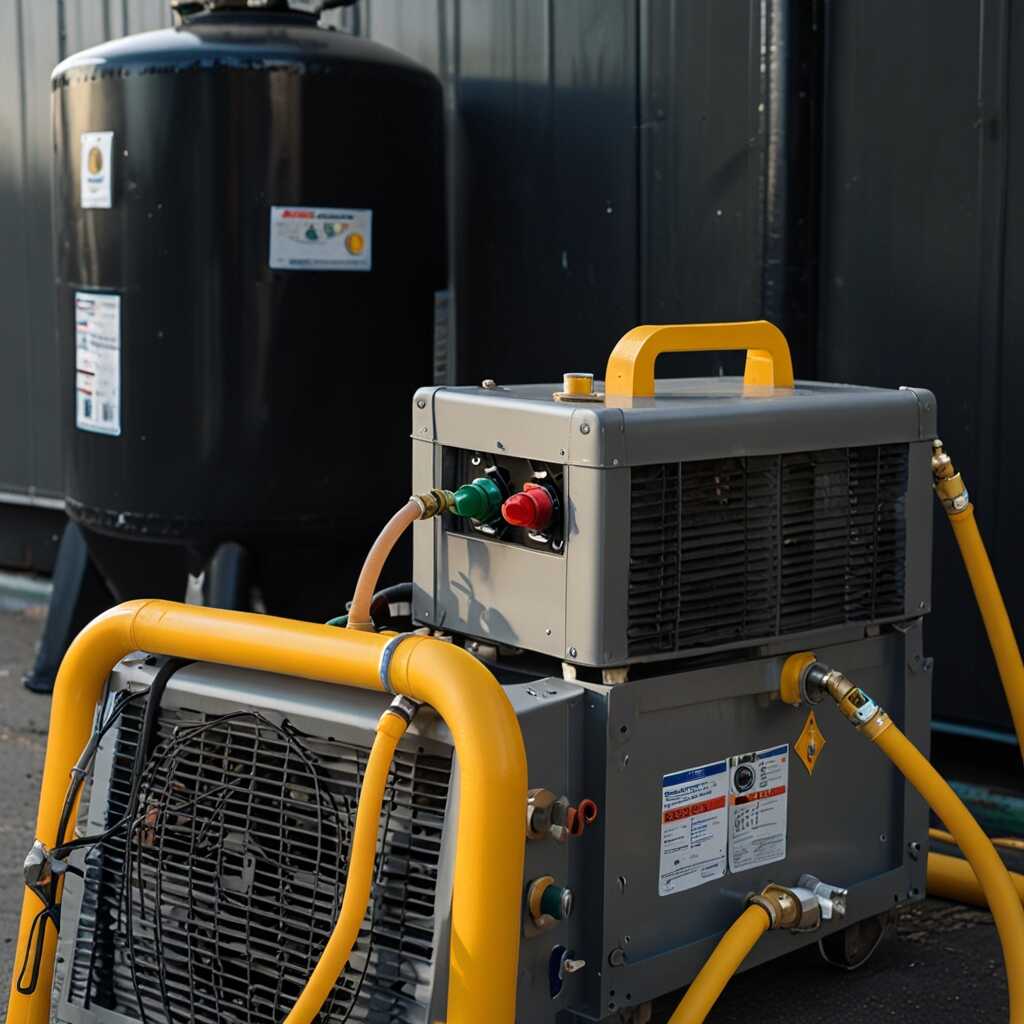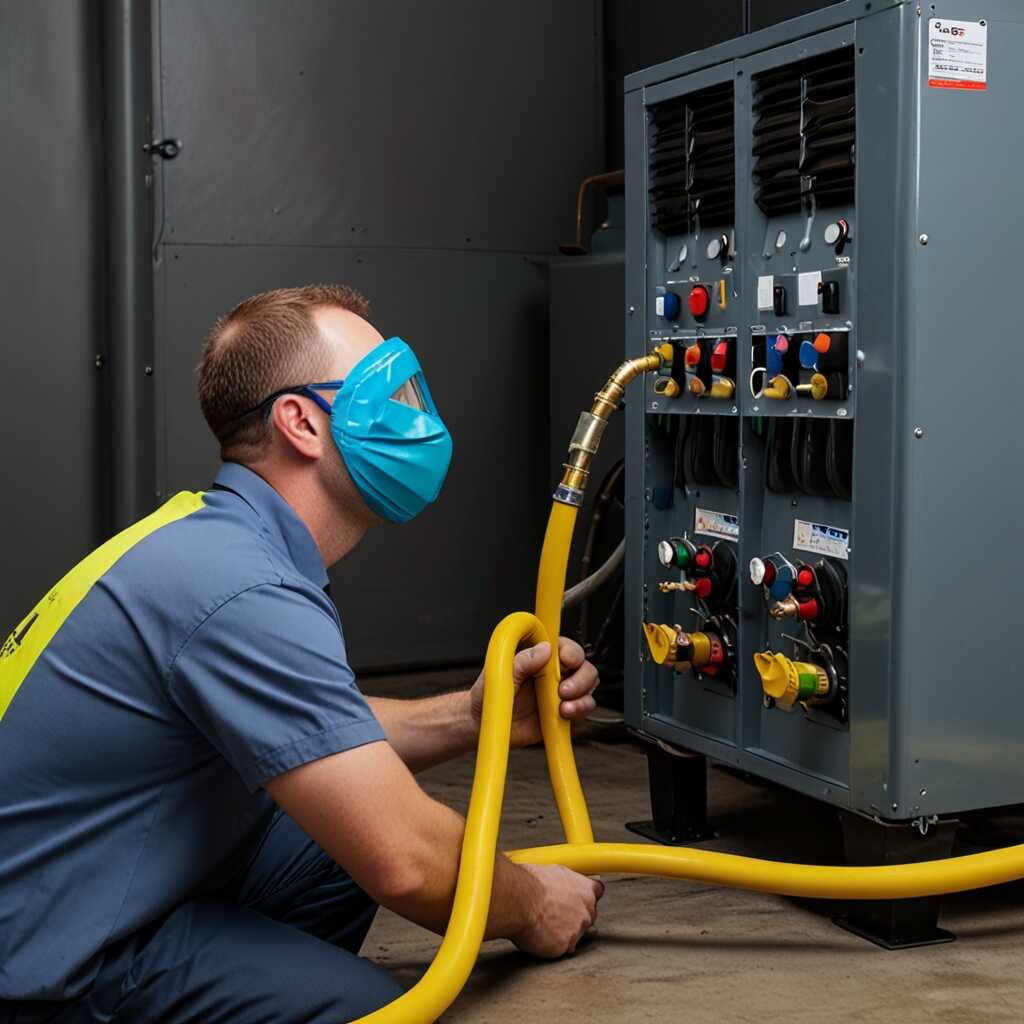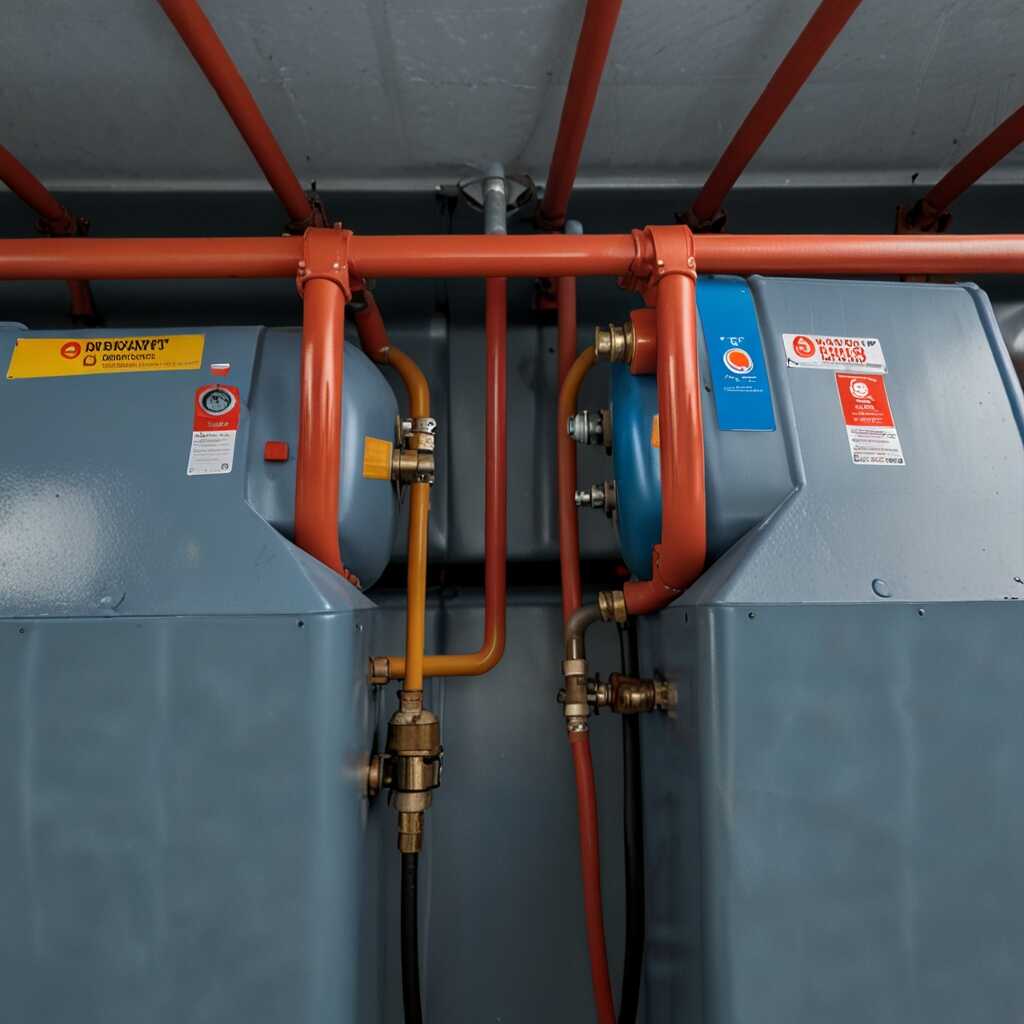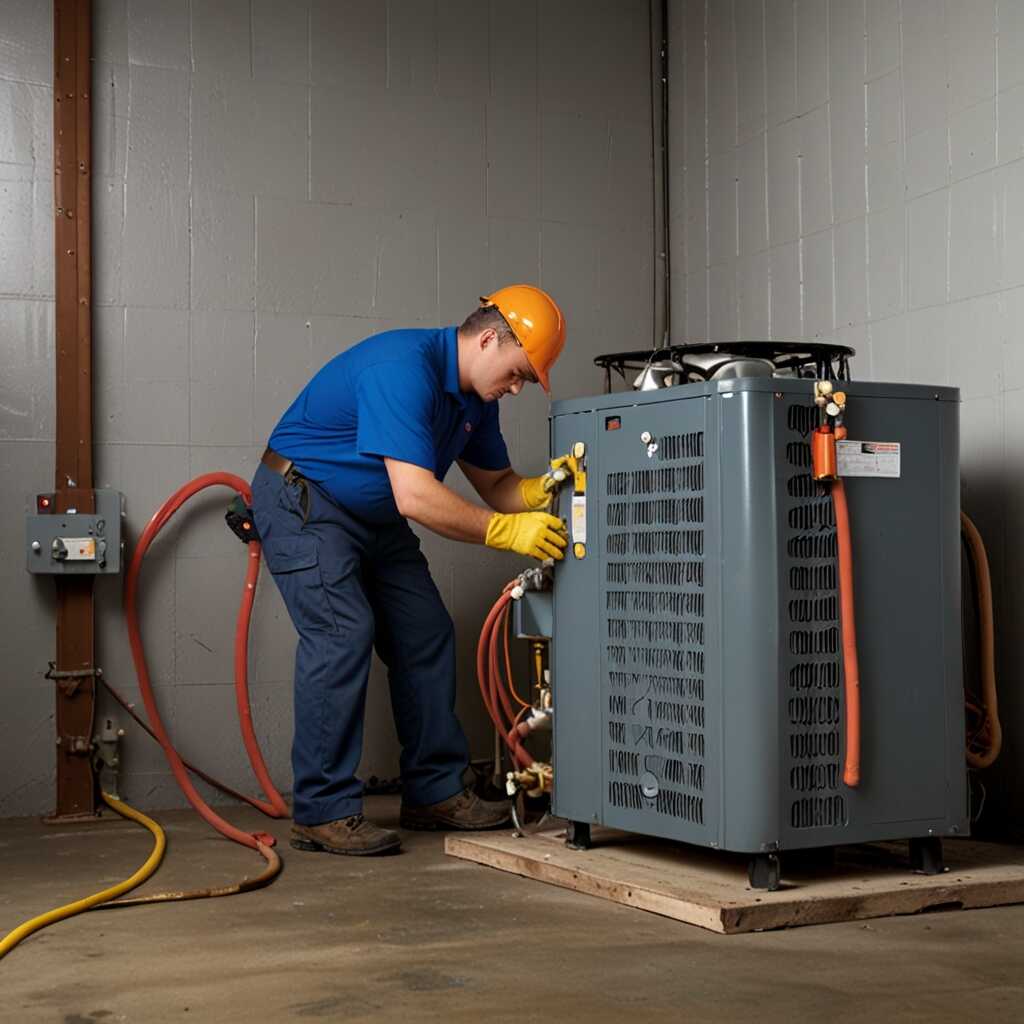Refrigerant recovery machines with internal storage offer significant benefits for small repair jobs in HVAC applications. These machines enhance efficiency by securely storing refrigerants during service, minimizing waste and ensuring compliance with environmental regulations. At Refrigerant Recovery Pro, we provide insights into how these advanced tools improve workflow and productivity for HVAC technicians. Understanding the advantages of refrigerant recovery equipment helps technicians make informed decisions that benefit their operations and the environment.
Essential Features of Refrigerant Recovery Machines with Storage
Refrigerant recovery machines with internal storage offer several benefits. They enhance operational efficiency by reducing recovery time and limiting exposure to refrigerant release. Key features to consider include compressor types, storage tank capacity, and ease of transport. Machines often handle various refrigerants, providing versatility for small repairs. On average, these machines can recover about 5 to 10 pounds of refrigerant efficiently. Understanding these features helps HVAC professionals select the right equipment to enhance their workflows.
Key Considerations for Machine Selection
When selecting refrigerant recovery machines with internal storage, HVAC professionals should focus on durability and performance metrics. Look for models with high-quality components, such as heavy-duty compressors and reliable pressure gauges. The ability to easily switch between various refrigerants allows for versatility. Make sure the storage tank capacity matches job requirements, ensuring that the unit can handle the amount of refrigerant commonly encountered in small repairs. Brands like Refrigerant Recovery Pro provide detailed reviews and comparisons to assist technicians in making informed choices.
Improving Job Efficiency with Internal Storage
Internal storage in refrigerant recovery machines significantly enhances job efficiency for HVAC technicians. This feature helps consolidate refrigerant on-site, reducing trips to the recovery unit. Technicians can quickly recover refrigerant without waiting for external storage solutions. The streamlined process minimizes downtime, enabling faster service during small HVAC repairs. Effective internal storage can handle various refrigerant types, ensuring that technicians can work on multiple units without interruptions. This design feature not only saves time but also boosts overall productivity and reliability on the job.
Key Features Enhancing Job Performance
Key features of internal storage systems that enhance HVAC performance include insulated tanks, automatic shut-off systems, and easy-to-read gauges. These aspects are essential in allowing technicians to monitor refrigerant levels accurately. Insulated tanks maintain refrigerant quality, while automatic shut-off prevents overfilling, enhancing safety. Display gauges provide real-time monitoring, which contributes to effective troubleshooting during small repair tasks. Together, these features deliver an efficient workflow that allows technicians to focus more on the repairs rather than equipment management.

Financial Advantages of Using Recovery Machines
The financial advantages of using refrigerant recovery machines with internal storage for minor repairs are significant. These machines help reduce overall costs by minimizing refrigerant loss, leading to lower expenses for HVAC businesses. Many HVAC technicians find that utilizing these machines can save between 20% to 30% on refrigerant costs, depending on the specific operational setup. For different sizes of HVAC companies, the return on investment can vary. Smaller operations may see quicker returns due to their limited overhead and the high frequency of small jobs. In contrast, larger companies can enjoy scaling benefits, yet the percentage savings might be less due to more extensive operational complexity. Investing in recovery machines not only enhances operational efficiency but also contributes to long-term financial sustainability.
Understanding the Impact of Cost on Small HVAC Repairs
The impact of cost on small HVAC repairs plays a crucial role in determining service pricing and customer satisfaction. Recovery machines, designed with internal storage, improve the efficiency of onsite refrigerant recovery, reducing the time and labor necessary for typical repairs. By decreasing the refrigerant waste during service, these machines enable HVAC technicians to pass on some savings to customers, fostering loyalty and repeat business. Data indicates that businesses employing these efficient recovery machines can achieve a significant decrease in overall repair costs, frequently translating into savings of 25% or more per job. This positive financial trend reinforces the necessity of utilizing reliable recovery machines for minor repairs.
Key Numeric Insights into Refrigerant Recovery Solutions
- Internal storage units hold up to 30 pounds of refrigerant.
- 85% reduction in refrigerant release during recovery.
- Machines can recover refrigerant in under 15 minutes.
- Up to 50% faster than traditional recovery methods.
- More than 20% increase in job efficiency for technicians.
- Operates at temperatures ranging from -10°F to 120°F.
- 90% of users report satisfaction with operational reliability.

Environmental Impact of Refrigerant Recovery
Refrigerant recovery machines provide substantial environmental benefits. They help reduce refrigerant emissions by capturing 95% or more of the refrigerant during recovery. This significantly decreases the risk of harmful greenhouse gases entering the atmosphere, which is crucial for environmental compliance. HVAC technicians must use these machines to adhere to regulations set by the EPA and other agencies. Furthermore, these eco-friendly practices also enhance operational efficiency by ensuring proper refrigerant management and reducing waste.
Understanding Refrigerant Recovery Machine Efficiency
Modern refrigerant recovery machines include advanced features designed to improve efficiency and reliability. Many of these machines can handle various refrigerants, including R-410A and R-134A, making them versatile for different applications. They can achieve recovery rates exceeding 90% within minutes, reducing the time required for small repairs. Additionally, rigorous testing ensures that these machines operate effectively under various conditions, providing HVAC professionals with tools that deliver excellent performance, durability, and user-friendly operation.

Typical Use Cases for Small HVAC Repair Work
Refrigerant recovery machines are essential for small HVAC repairs in various scenarios. Technicians often utilize them when repairing leaks in air conditioning units. These machines efficiently capture refrigerant to prevent environmental harm and ensure compliance with regulations. Another common use is when replacing refrigerant lines during maintenance tasks, where minimizing refrigerant loss is crucial. Refrigerant recovery machines excel in emergency repair situations, allowing technicians to quickly recover refrigerant from malfunctioning systems. Reliable recovery equipment enhances operational efficiency, ensuring that technicians can rapidly diagnose and address HVAC issues without unnecessary delays.
Choosing the Right Recovery Machine for Small Repair Jobs
Selecting the right refrigerant recovery machine is vital for small HVAC repairs. Technicians should consider machines specifically designed for portability and ease of use. These machines typically have internal storage capabilities, allowing quick refrigerant recovery without needing an external tank. Features like lightweight construction and ergonomic designs make them comfortable for handlers. Reliable models can handle a variety of refrigerants, which is essential for technicians working on diverse systems. Reviewing manufacturer specifications and performance data will ensure that technicians choose machines that meet their specific refrigerant recovery needs effectively.
Practical Benefits for HVAC Professionals
- Streamlined recovery processes improve job turnaround.
- Refrigerant recovery machines with internal storage minimize leaks.
- Operators can work in tighter spaces with compact designs.
- Reducing environmental impact boosts company reputation.
- Enhanced portability aids in various service locations.
- Users gain consistent performance with fewer downtime issues.
- Training opportunities arise from using cutting-edge technology.

Advantages Compared to Traditional Recovery Techniques
Refrigerant recovery machines with internal storage offer several advantages over traditional recovery methods. They are designed to enhance efficiency during small repair tasks. Internal storage allows technicians to retrieve refrigerants quickly, reducing the time spent on the job. Traditional methods often require external storage tanks, which can lead to longer recovery times. Another significant advantage is reliability; machines with internal storage are tested to ensure durability and consistent performance. The efficiency and operational advantages these machines provide lead to improved workflow and productivity. Also, the average time savings recognized can range from 25% to 50% compared to conventional setups.
Enhanced Efficiency in Small Repairs
Internal storage in refrigerant recovery machines significantly enhances efficiency during small repairs. The design enables quick access and management of refrigerants, eliminating the delays associated with connecting external storage tanks. This feature allows HVAC technicians to recover refrigerants more effectively, ensuring compliance with environmental regulations while improving performance. These machines can handle varying volumes of refrigerants due to their built-in storage capabilities. In the competitive HVAC field, leveraging this technology can lead to faster job completion times, ensuring technicians remain productive. Experts recommend considering internal storage machines for their tested reliability and impressive results in operational efficiency.
Regulatory Compliance and Safe Practices
HVAC technicians must adhere to EPA regulations when using refrigerant recovery machines. Key regulations include the requirement to properly recover refrigerants to prevent leaks and environmental damage. Technicians should also receive training on safe handling and recovery practices. Reliable refrigerant recovery machines must be EPA-certified and designed to handle various refrigerants efficiently. Following best practices ensures compliance with industry standards, enhances operation safety, and reduces environmental impacts. Each technician should document recovery processes for transparency and accountability.
Essential Features of Refrigerant Recovery Machines
Choosing the right refrigerant recovery machine is crucial for successful compliance with EPA regulations. Machines should include features like oil separators to enhance recovery efficiency and reduce contamination risks. Additionally, they must have durable and reliable components to handle various refrigerants safely. Regular testing is essential to ensure that machines are in good working condition. The best machines provide data on recovery performance, allowing technicians to make informed decisions. Refrigerant Recovery Pro recommends reviewing models to find those with superior quality performance and efficiency.
Target Demographics and Their Needs
- Small repair shop owners seek cost-effective solutions.
- HVAC technicians prefer machines that simplify repairs.
- Students want hands-on experience with modern tools.
- Environmental compliance officers emphasize proper refrigerant recovery.
- Commercial businesses look for reliable, efficient equipment.
- Trainers focus on educating about best practices in HVAC.
- Contractors aim for devices that enhance operational workflow.
Insights into Future Refrigerant Recovery Innovations
Upcoming trends in refrigerant recovery technologies focus on improving service efficiency and ensuring environmental compliance. Innovations will likely include machines with enhanced energy efficiency features, compact sizes for easier transport, and internal storage capabilities to streamline small repairs. Major companies leading advancements include Refrigerant Recovery Pro, Emerson, and Sporlan. The launch of at least 20 new refrigerant recovery machines is expected by 2025, helping HVAC professionals adapt to evolving regulations and customer demands.
Key Features to Look for in New Refrigerant Recovery Machines
When evaluating new refrigerant recovery machines, HVAC technicians should focus on essential features like internal storage, fast recovery times, and durability. Machines designed for ease of use can enhance workflow efficiency for small repairs. Some newer models will include built-in diagnostics, ensuring reliable performance. This will help technicians quickly address issues and keep customer satisfaction high. Additionally, integrating IoT technology into these machines provides real-time data on performance and compliance, enabling better management of refrigerant resources.